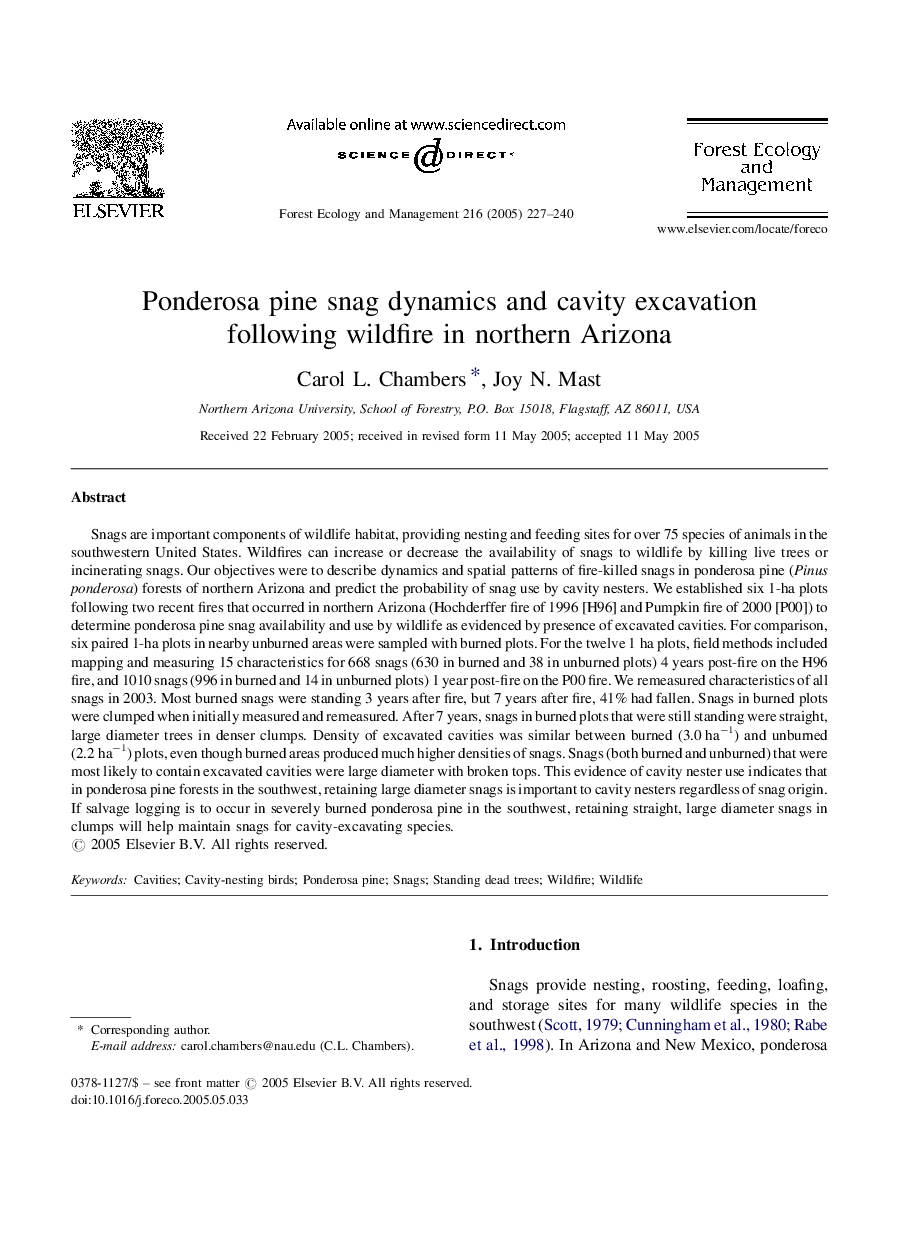| Article ID | Journal | Published Year | Pages | File Type |
|---|---|---|---|---|
| 9620181 | Forest Ecology and Management | 2005 | 14 Pages |
Abstract
Snags are important components of wildlife habitat, providing nesting and feeding sites for over 75 species of animals in the southwestern United States. Wildfires can increase or decrease the availability of snags to wildlife by killing live trees or incinerating snags. Our objectives were to describe dynamics and spatial patterns of fire-killed snags in ponderosa pine (Pinus ponderosa) forests of northern Arizona and predict the probability of snag use by cavity nesters. We established six 1-ha plots following two recent fires that occurred in northern Arizona (Hochderffer fire of 1996 [H96] and Pumpkin fire of 2000 [P00]) to determine ponderosa pine snag availability and use by wildlife as evidenced by presence of excavated cavities. For comparison, six paired 1-ha plots in nearby unburned areas were sampled with burned plots. For the twelve 1Â ha plots, field methods included mapping and measuring 15 characteristics for 668 snags (630 in burned and 38 in unburned plots) 4 years post-fire on the H96 fire, and 1010 snags (996 in burned and 14 in unburned plots) 1 year post-fire on the P00 fire. We remeasured characteristics of all snags in 2003. Most burned snags were standing 3 years after fire, but 7 years after fire, 41% had fallen. Snags in burned plots were clumped when initially measured and remeasured. After 7 years, snags in burned plots that were still standing were straight, large diameter trees in denser clumps. Density of excavated cavities was similar between burned (3.0Â haâ1) and unburned (2.2Â haâ1) plots, even though burned areas produced much higher densities of snags. Snags (both burned and unburned) that were most likely to contain excavated cavities were large diameter with broken tops. This evidence of cavity nester use indicates that in ponderosa pine forests in the southwest, retaining large diameter snags is important to cavity nesters regardless of snag origin. If salvage logging is to occur in severely burned ponderosa pine in the southwest, retaining straight, large diameter snags in clumps will help maintain snags for cavity-excavating species.
Related Topics
Life Sciences
Agricultural and Biological Sciences
Ecology, Evolution, Behavior and Systematics
Authors
Carol L. Chambers, Joy N. Mast,
